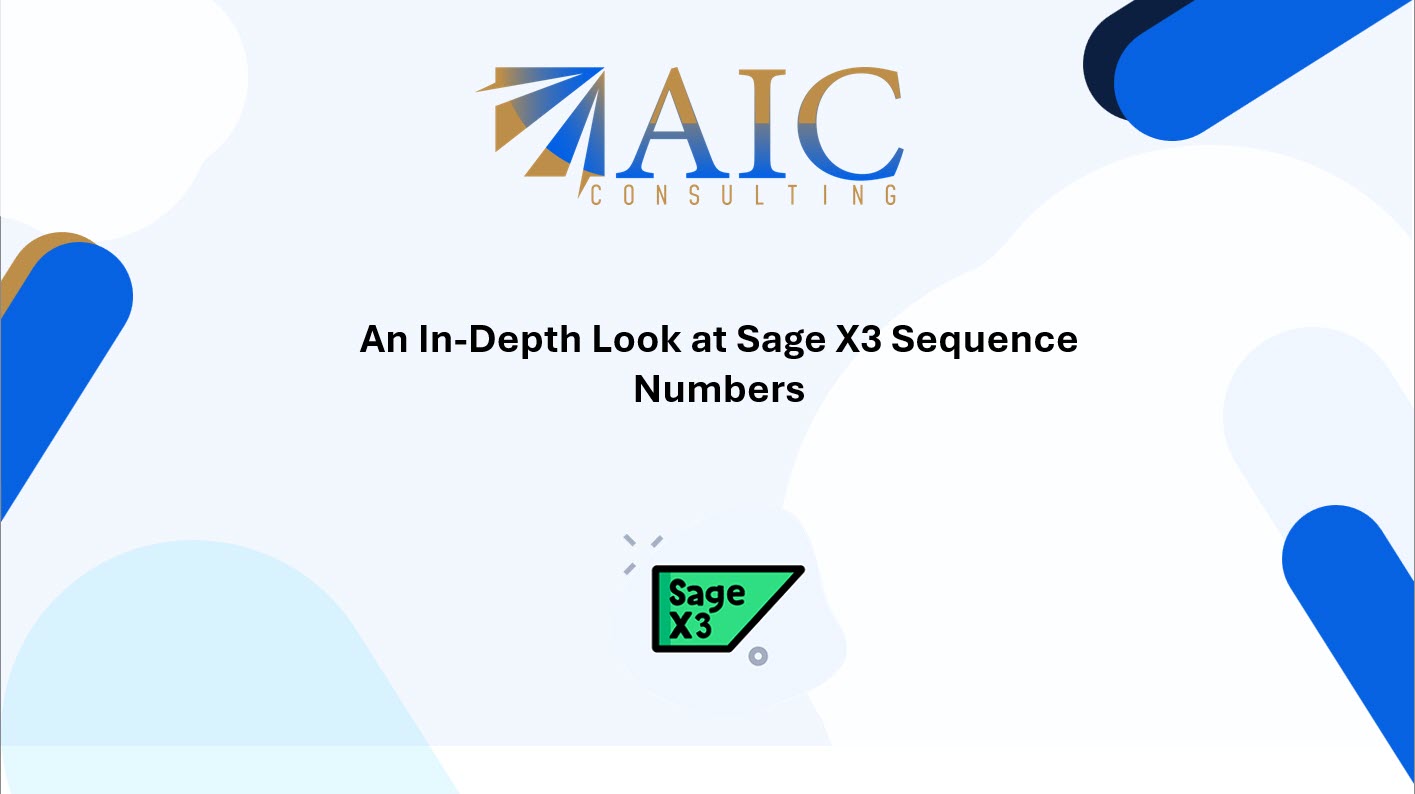
Mastering the Flow: An In-Depth Look at Sage X3 Sequence Numbers
In the dynamic world of Sage enterprise resource planning (Sage ERP), maintaining order and traceability is paramount. Within Sage X3, a critical mechanism for achieving this is the intelligent use of Sage X3 – Sequence numbers. Far from being mere identifiers, these automatically generated codes are the backbone of organized data management, impacting everything from sales order processing to financial auditing. Let’s delve deeper into the intricacies of Sage X3 – Sequence numbers and uncover their profound significance for your business operations.
Beyond the Basics: Why Sequence Numbers are Essential in Sage X3
While it’s easy to view Sage X3 – Sequence numbers as simply a way to label records, their importance extends far beyond basic identification. They are integral to the very fabric of how Sage X3 manages and relates data. Consider the journey of a sales order: it’s assigned a unique sequence number that is linked to through delivery, invoicing, and even potential returns. This consistent links allows for seamless tracking and reconciliation across different modules, providing a holistic view of each business process.
Furthermore, in industries with stringent regulatory requirements, the sequential nature of these numbers can be crucial for compliance. Imagine needing to audit a batch of manufactured goods or trace a financial transaction; the sequential numbering provides an undeniable and auditable trail. Understanding how to effectively leverage Sage X3 – Sequence numbers can significantly enhance your ability to meet these demands.
The Art and Science of Sequence Number Configuration in Sage X3
The power of Sage X3 – Sequence numbers truly shines through their flexible configuration options. Sage X3 provides robust tools to tailor these identifiers to your specific organizational needs:
- Crafting the Definition (GESANM): The “Sequence number definition” function (GESANM) is where you become the architect of your numbering system. You can go beyond simple sequential integers by incorporating meaningful prefixes (e.g., “SO” for Sales Order, “INV” for Invoice), date components (allowing for easy filtering by year or month), and even company or site codes to distinguish records originating from different parts of your business. The ability to use formulas opens up even more advanced possibilities, such as deriving parts of the sequence number from other relevant data fields. This level of customization ensures that your sequence numbers are not just unique but also contextually relevant.
- Strategic Assignment (GESTCA): The “Sequence number assignment” function (GESTCA) is where you strategically link your carefully crafted numbering structures to the various objects within Sage X3. This process requires a thoughtful understanding of how different document types and master data should be identified. For instance, you might want separate numbering schemes for sales orders and purchase orders to easily differentiate them. You can also define whether manual entry of numbers is allowed for certain document types, providing a balance between system-driven automation and user flexibility.
- Managing the Flow (MODCPT): The “Sequence number values” function (MODCPT) offers a window into the current state of your numbering sequences. Here, you can see the “next number” that will be assigned. While typically managed automatically, this function can be invaluable during initial system setup, data migration, or in rare cases where manual intervention is required (with appropriate caution, of course).
Unlocking Deeper Insights and Efficiencies with Sequence Numbers
A well-designed sequence numbering system in Sage X3 can yield significant benefits beyond mere identification:
- Enhanced Data Analysis: Consistent and logical numbering facilitates more effective filtering, sorting, and analysis of your business data. Imagine quickly pulling up all sales orders from a specific year or tracking the progression of a particular project through its associated documents.
- Seamless Integration: When integrating Sage X3 with other systems, well-defined sequence numbers act as reliable keys for data mapping and synchronization, ensuring data consistency across platforms.
- Improved Communication: Clearly numbered documents facilitate smoother communication both internally and externally with customers and vendors, reducing ambiguity and streamlining discussions.
- Stronger Internal Controls: A robust and consistently applied sequence numbering system contributes to stronger internal controls by providing a clear audit trail and reducing the risk of missing or duplicated documents.
In Conclusion: Elevate Your Sage X3 Proficiency with Sequence Number Mastery
Understanding and effectively utilizing Sage X3 – Sequence numbers is not just a technical skill; it’s a strategic advantage. By moving beyond a basic understanding and delving into the configuration possibilities and the broader implications for data management, you can significantly enhance your proficiency with Sage X3 and contribute to a more organized, efficient, and insightful business operation.
Please see the video below
As a registered Sage X3 business partner, we have the expertise and experience to help you implement and customize Sage X3 to meet your specific business needs.
Explore our YouTube channel for the latest videos and access free training videos for Sage X3. Please contact us for all your Sage X3 requirements. The first task is free on us. Terms and conditions apply.


